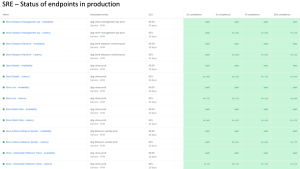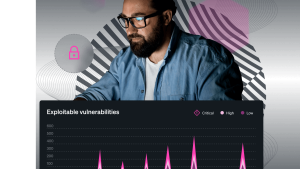Dans un monde où les transactions numériques stimulent le chiffre d'affaires, il est essentiel d'assurer une expérience d'achat en ligne exceptionnelle. La saison des ventes n'est pas une exception. Durant cette période, il est essentiel que l'expérience en ligne reste robuste et fiable. En utilisant les capacités d'observabilité au cours de cette période critique, vous pouvez améliorer l'expérience utilisateur et stimuler la croissance du chiffre d'affaires, et ce tout en réduisant le risque des problèmes de performances.
Importance de l'observabilité
L'observabilité est plus qu'un simple mot à la mode ; c'est une approche stratégique visant à comprendre l'ensemble des performances de l'ensemble de votre système. Selon notre tout dernier rapport Prévisions sur l'observabilité, 62 % des organisations ont indiqué que les pannes leur coûtaient au moins 1 million d'USD par heure de temps d’arrêt. Avec l'amélioration de l'observabilité, les entreprises ont noté une croissance de 29 % de leur chiffre d'affaires et des opérations. Des entreprises comme Kmart, Skyscanner et Shutterstock utilisent les outils d'observabilité de New Relic pour améliorer leurs systèmes et l'expérience client afin de :
- Réduire les incidents et les temps d’arrêtL'un des avantages clés de l'observabilité est la capacité à réduire les incidents et à minimiser les temps d’arrêt. Un seul point de visibilité centralisé pour l'observabilité full-stack fournit des informations détaillées exhaustives sur différents stacks technologiques comme AWS et Kubernetes. Cette visibilité intégrale réduit drastiquement le MTTR, ce qui entraîne une réduction du temps d’arrêt et une plus grande satisfaction des clients.
- Comprendre le parcours du clientL'observabilité vous donne la possibilité de voir ce que voient vos clients. Qu'il s'agisse des Core Web Vitals pour le monitoring des performances du site ou du tracing distribué pour gérer les pics de trafic, il est essentiel de bien comprendre le comportement des clients. Les plateformes comme Thortful utilisent le tracing distribué pour assurer une expérience utilisateur homogène, en capturant et analysant toutes les interactions sur le site.
- Se préparer à l'avance. La préparation proactive est l'épine dorsale d'une saison de ventes réussie. En déployant les multiples capacités d'observabilité, vous pouvez tester divers parcours d'utilisateurs et d'assurer que votre système est prêt pour un trafic élevé. Les retailers comme Kmart utilisent le monitoring des performances des applications, le monitoring de navigateurs et Synthetics pour simuler les parcours des utilisateurs et personnaliser leurs systèmes pour des performances optimales pendant les périodes d'activité intense.
Stratégies d'optimisation des performances
Améliorez votre observabilité et assurez une saison de ventes réussie en utilisant :
Les Core Web Vitals
La rapidité de chargement et des sites interactifs est critique. Kurt Geiger utilise les dashboards New Relic pour faire le suivi du LCP (Largest Contentful Paint) et du TTI (Time to Interactive), améliorant ainsi l'expérience d'achat des clients. La société priorisait les Core Web Vitals de Google pour booster les performances du site web cruciales pour le chiffre d'affaires de l'e-commerce lors des pics de vente. En intégrant les données de Magento à New Relic, le score des Core Web Vitals a été amélioré de 45-50 à 85-90, ce qui a encouragé la collaboration entre les équipes SEO, marketing, et ingénierie. Cette approche data-driven a amélioré la rapidité du site et la satisfaction des clients, créant ainsi un nouveau standard pour le secteur.
L'observabilité full‑stack
Implémentez le monitoring de bout en bout pour réduire le temps d’arrêt. Grâce à New Relic, M&S a considérablement amélioré les processus de gestion des incidents en visualisant tout son écosystème technologique. Notre rapport Prévisions sur l'observabilité a montré que les organisations exploitant l'observabilité full-stack voyaient une réduction annuelle de 79 % du temps d’arrêt, économisant ainsi 42 millions d'USD chaque année. Mais à ce jour, seulement un quart (24,9 %) des participants à l'enquête ont indiqué avoir mis en place l'observabilité full-stack. Les retailers, comme la marque britannique Marks and Spencer, désormais connue sous le nom M&S, sont passées à l'observabilité full-stack sur New Relic, avec des informations détaillées sur AWS, Kubernetes et leur suite complète de microservices.
Le tracing distribué et Synthetics
Gérez les pics de trafic avec précision. L'approche de Thortful lui permet de gérer les problèmes avant qu'ils n'aient un impact sur les clients, assurant ainsi de très bonnes performances même lors des périodes de pointe. Le tracing distribué permet aux équipes de Thortful de capturer, visualiser et analyser les interactions sur tout le site web. La société a mis en place des scripts synthétiques qui définissent les parcours utilisateur types pour les clients de leurs sites, et peut aussi recevoir des alertes et répondre aux problèmes soulevés avant même qu'un seul utilisateur rencontre un problème similaire lors de ses achats.
De multiples capacités d'observabilité
Kmart exploite une suite d'outils d'observabilité — des performances des applications au monitoring synthétique — qui lui permet d'assurer que ses systèmes sont prêts pour les pics d'activité de vente prévus et imprévus. Dans le rapport Prévisions sur l'observabilité de cette année, 75 % des participants avaient déployé au moins cinq capacités d'observabilité et 37 % en avaient 10. Ce chiffre devrait augmenter à mesure que plus d'organisations tirent parti de l'observabilité et découvrent ses avantages au niveau des ventes et de la croissance de leur chiffre d'affaires. Kmart utilise le monitoring des performances des applications pour identifier les anomalies, le monitoring de navigateurs pour une visibilité complète des performances des pages web, le monitoring synthétique pour monitorer et simuler le parcours des utilisateurs et l'intégration à Slack afin d'envoyer des alertes intelligentes.
À vous d'agir !
La prochaine saison des fêtes est la parfaite occasion de mettre en place des pratiques d'observabilité robuste pour protéger des pertes de revenus potentielles et jeter les bases d'améliorations continues de la satisfaction des clients et de la croissance du chiffre d'affaires. Incorporez ces stratégies dans vos opérations et découvrez la puissance de l'observabilité — une source intarissable d'avantages, toute l'année.
Les opinions exprimées sur ce blog sont celles de l'auteur et ne reflètent pas nécessairement celles de New Relic. Toutes les solutions proposées par l'auteur sont spécifiques à l'environnement et ne font pas partie des solutions commerciales ou du support proposés par New Relic. Veuillez nous rejoindre exclusivement sur l'Explorers Hub (discuss.newrelic.com) pour toute question et assistance concernant cet article de blog. Ce blog peut contenir des liens vers du contenu de sites tiers. En fournissant de tels liens, New Relic n'adopte, ne garantit, n'approuve ou n'approuve pas les informations, vues ou produits disponibles sur ces sites.


